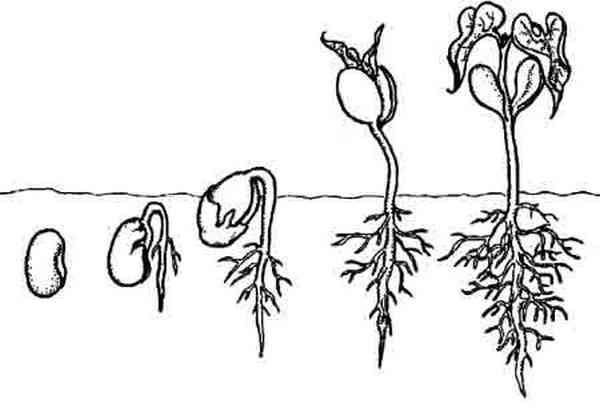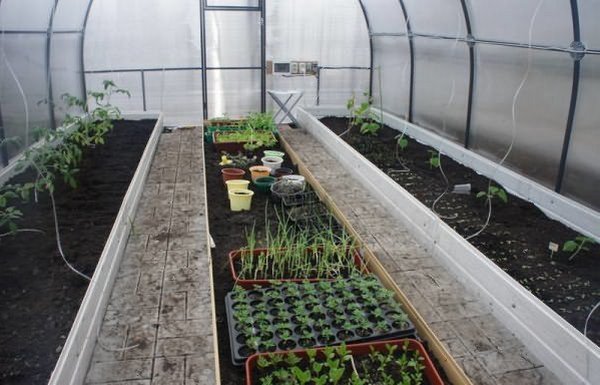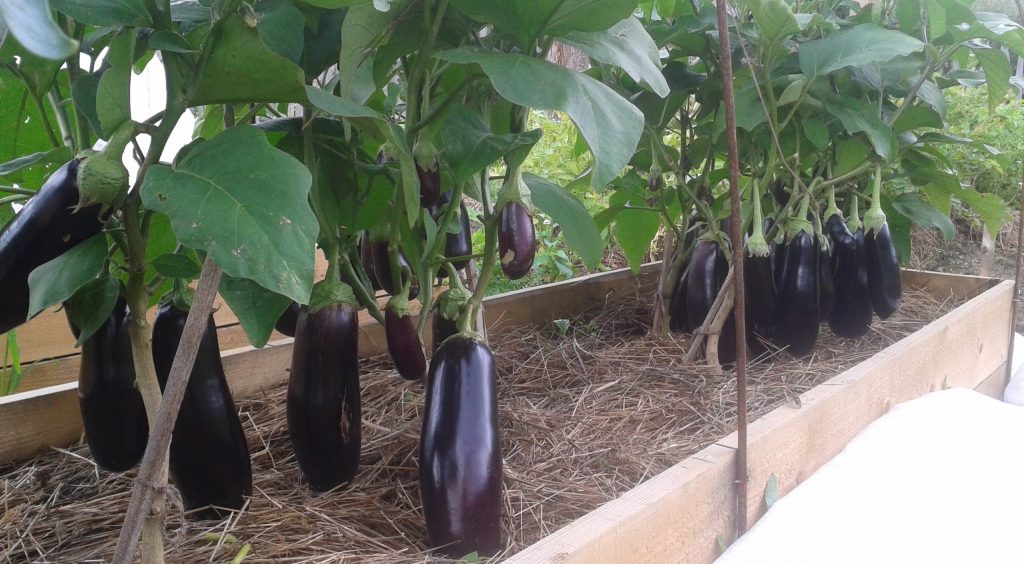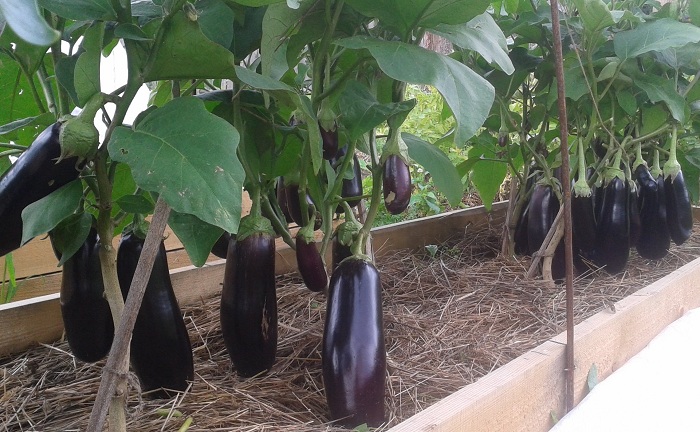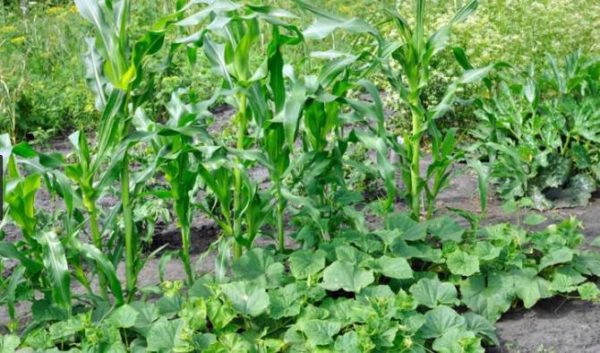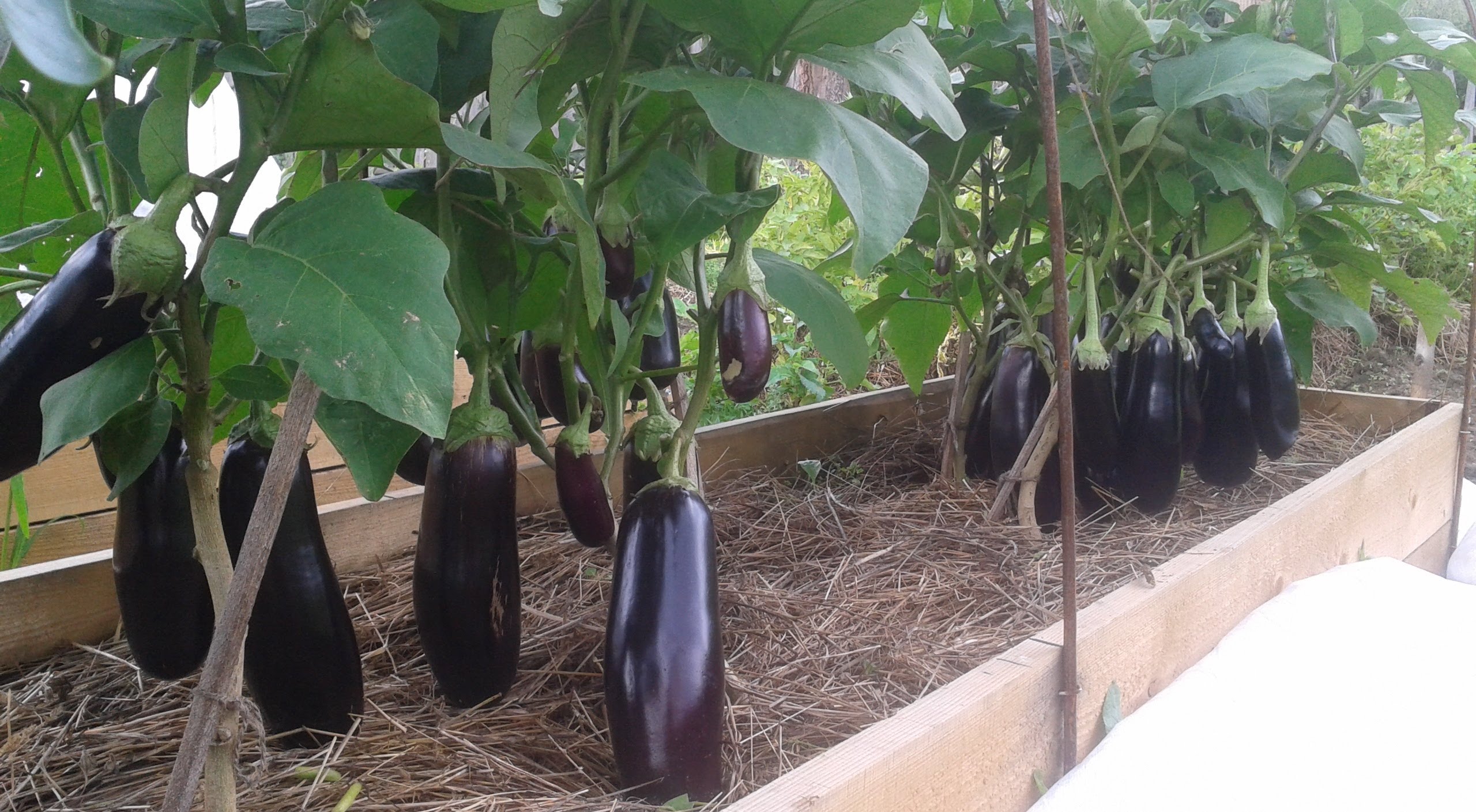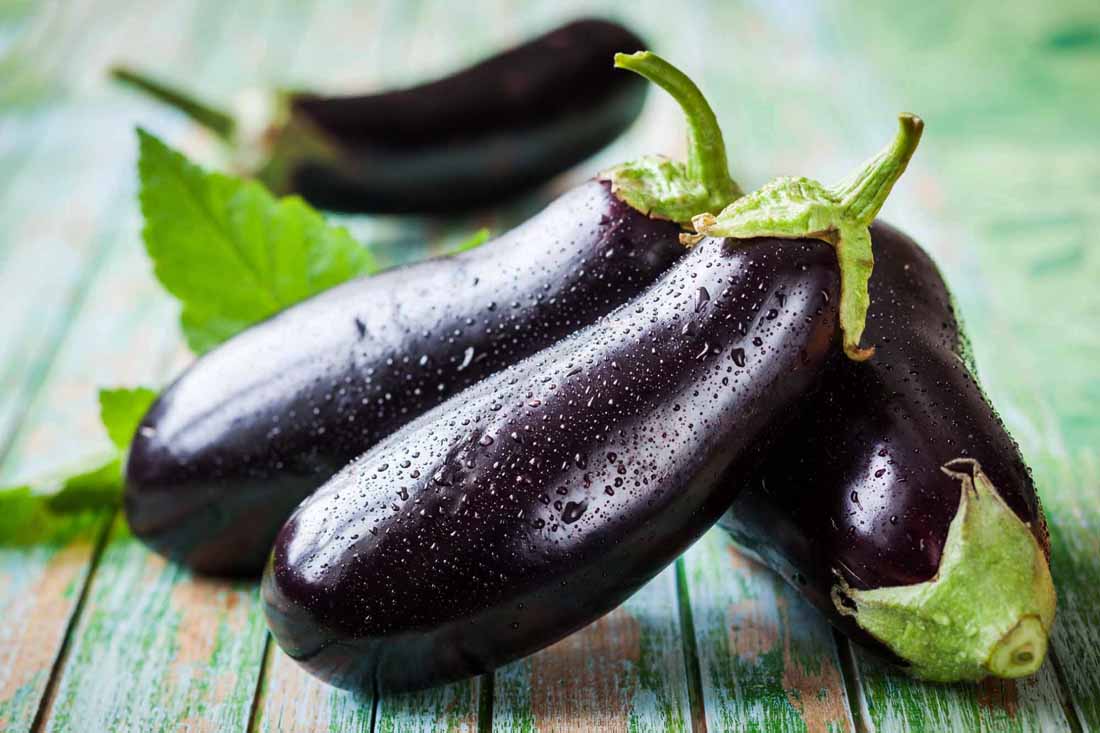Content:
Several crops can be grown in one greenhouse at the same time. The main condition for the joint growth of vegetables in the garden is their compatibility and the same requirements for growing conditions: temperature, air humidity, the amount of watering, the presence of a certain set of nutrients. To understand whether it is possible to plant eggplants and peppers in the same greenhouse, you need to compare the conditions that are optimal for their growth and fruiting.
Conditions for growing eggplants in a greenhouse
Growing in the greenhouse "blue" can grow and bring a good harvest throughout the year. To do this, you need to create a suitable microclimate inside the greenhouse and organize high-quality plant care. Eggplants love warmth, therefore, planting eggplant seedlings in closed ground is done after the soil in the beds warms up. The earth should be saturated with useful substances. You can supply plants with natural fertilizers if you follow the rules of crop rotation.
The eggplant bed is broken up where it used to grow:
- carrot,
- parsley,
- legumes,
- cucumbers.
Peas and cucumbers are especially good precursors for eggplant. Pea roots are able to accumulate nitrogen necessary for the active growth of "blue".
When a suitable place is determined, they begin to prepare the garden:
- garbage (plant remains) is taken out of the greenhouse;
- organic fertilizers are applied to the soil;
- dug up the bed;
- the soil is watered at least two times.
Plants that are protected from pests and infectious diseases will bear fruit well.
To disinfect the soil from the beds, you can use one of the following methods:
- pour boiling water over the beds several times;
- steam the soil in a special oven;
- pour over with chemical and antibiotic agents.
It is difficult to say which method is most effective. In order to surely get rid of the larvae of pests, it is best to carry out a comprehensive treatment using several preventive methods.
Conditions for growing cucumbers in a greenhouse
For good growth and fruiting of cucumbers you need:
- provide good care;
- protect against diseases and pests;
- organize the correct lighting, watering and heating in the greenhouse.
Cucumbers are thermophilic and moisture-loving plants. The temperature in the greenhouse should be above + 22 degrees, and watering should be ensured so that the soil in the beds is moist, but not wet. If the roots are constantly in puddles of water, they will begin to rot.
Throughout its life, the plant must be fed with organic fertilizers. In addition to organic matter, they need:
- nitrogen,
- phosphorus
- potassium.
It is impossible to overfeed cucumbers, they are very sensitive to overdose of mineral fertilizers. If the content in the soil is higher than the permissible norm of nitrogen and phosphorus, plants can lose up to half of the flowers and ovaries. Cucumber bushes are grown on trellises in greenhouse conditions to save space and ease of care.
What determines the compatibility of cultures
Not all garden crops have good neighborly relations.Only those that have the same requirements for growing conditions can be planted together.
Some garden crops are known to inhibit the growth of other species to avoid competition. There are vegetables that inhibit not only the germination of seeds of another species, but also related crops. Substances released by unfriendly plants inhibit the growth of neighbors' shoots. For this reason, only those crops that get along well with the other can be planted on one bed. It is necessary to adhere to this principle of growing vegetables and herbs regardless of where they are planted:
- in the greenhouse,
- on an open bed,
- to the greenhouse.
Compliance with the rules of agricultural technology allows you to improve the composition of the soil and protect plants from infectious diseases. Good neighbors for cucumbers are:
- corn,
- peas,
- sunflower,
- salad,
- Chinese cabbage,
- bell pepper.
Do not plant next to crops that negatively affect each other. The most undesirable neighbors for cucumbers are herbs:
- basil,
- hyssop,
- cilantro,
- oregano.
It is highly undesirable to plant cucumbers and nightshades at close range. Tomatoes and potatoes growing next to cucumber bushes oppress their neighbors. Grapes and cucumbers are not friends with each other.
For eggplants, the neighborhood of "relatives" - potatoes and tomatoes is undesirable. These cultures do not oppress each other, but together they attract their main enemy: the Colorado potato beetle.
Vegetable growers often wonder if it is possible to plant eggplants next to peppers in the same greenhouse. Both vegetable crops require the same growing conditions. Joint and separate beds are organized for them in one greenhouse. From such a neighborhood, the yield of the bushes does not decrease.
Can eggplants and cucumbers be grown together in a greenhouse?
Owners of small home greenhouse buildings tend to use square meters of soil with the greatest benefit. For them, the question is how to grow eggplants in a greenhouse with cucumbers and tomatoes, is it possible to combine these vegetables in the same garden?
Cucumbers and eggplants are compatible because they both need the same amount:
- heat,
- Sveta,
- moisture,
- dressing.
Moreover, cucumbers and "blue" ones need the same set of nutrients, so you can feed the bushes of both crops with the same fertilizers. These vegetables are planted in the ground after the same predecessors.
However, if you compare in more detail the conditions necessary for the successful cultivation of cucumbers and eggplants, it becomes clear that there is some difference between them. For example, cucumbers can be watered by spraying, while eggplants are watered only at the root. "Little blue" do not like high humidity in the greenhouse, and cucumbers tolerate it well.
Eggplants and cucumbers in the same greenhouse are planted side by side, but they rarely organize joint beds for them.
For growing in a greenhouse, you can take several types of eggplants and cucumbers. Low-growing eggplants are planted next to cucumber lashes growing on trellises. Only with this arrangement of bushes, both species will normally coexist.
The most sunlit part of the greenhouse is allocated for eggplants, and the rest of the room is allocated for cucumbers. It is better to delimit both cultures with each other using a plastic wrap partition.
Eggplants and cucumbers are planted on opposite sides of the central aisle. With this arrangement, it is easier to install irrigation devices, taking into account the conditions necessary for each of the crops.
What else can you plant eggplant in a greenhouse? For example, cucumbers will grow well next to corn.And in the eggplant garden, you can plant beans or peas. Cucumbers and dill have a beneficial effect on each other. Quite often, eggplants and bell peppers are grown in the same greenhouse.
The peas are allowed to grow until flowering, after which they are cut under the root. The roots remaining in the ground are a natural fertilizer for the main crop. You can, of course, wait for the pea pods to ripen and after that remove the aerial part of this plant from the greenhouse, and then use the stems to prepare a liquid top dressing.
Eggplants and cucumbers can be alternated, the soil from under the cucumber bushes is great for nightshades. While the shoots of the main plant are gaining strength, any fast-growing plant can be planted next to it in the garden:
- bow,
- salad,
- radish.
Tall eggplant bushes need a garter and pinch. Large plants take up a significant part of the greenhouse space and growing them in the same garden with the same large and branched crops is extremely problematic.
Eggplant: growing and caring for a greenhouse with cucumbers
Heat-loving vegetables grow well in metal-based polycarbonate greenhouses. In glass greenhouses, garden crops mature even better. Vegetable crops growing in greenhouse conditions are easier to protect from pests and infectious diseases.
Processing and sowing seeds
Cultivation is possible in a seedling and non-seedling way. Seeds for seedlings for the greenhouse are sown all year round, the sowing time depends on when the grower plans to harvest.
Seeds are processed in a manganese solution before sowing. Do not soak the seed marked on the packaging with the letter F1. The producer paints the processed hybrids in colors unnatural for the seeds:
- red,
- blue,
- green,
- bright yellow.
2-3 seeds are placed in one container at once. Thus, with poor germination, there will be at least one shoot in each container. If all the seeds sprout, then only strong seedlings are left, and weak stems are removed.
Landing on the garden
Seedlings can be planted in the ground 70-80 days after sowing. Shoots can be transferred to heated greenhouses earlier if they are sown in peat containers. When the plants are planted in the ground with the cup, their root system is not stressed.
Cucumber seedlings are transplanted into the ground together with the peat container containing them immediately after the appearance of 2-3 leaves. Plants can only be planted in the ground after a suitable microclimate has been created in the room. To do this, the greenhouse is heated for several days, and the soil is watered with warm water.
Eggplants are planted in two lines at a distance of 30-40 cm from each other. You can arrange the seedlings in a checkerboard pattern. If tall and spreading varieties are selected for cultivation, planting is carried out in one line. For large plants, leave a greater distance between the bushes.
Watering
If the eggplants and cucumbers were planted in the same greenhouse, a plastic wrap is stretched between the beds. The fact is that cucumbers can and should be watered by spraying the leaves with water; for eggplant, such watering can be harmful. They will start to hurt from high humidity. For them, drip irrigation is installed in greenhouses, in which water moistens the root section of the soil. Cucumbers need to be watered abundantly; without good watering, the fruits acquire a bitter taste.
Fertilization
Nutrients are essential for both crops throughout their lives. Organic matter can be applied to the soil every two weeks. The plants are fed with mineral fertilizers produced by chemical means only a few times.The introduction of chemistry into the soil is stopped a week before the beginning of flowering. Cucumbers, like eggplants, are very sensitive to excess nitrogen and fluoride in the soil. Leaves on plants may turn yellow, and flowers and ovaries may fall off.
Cucumbers respond well to foliar feeding. Cucumber lashes can be sprayed with infusions of onions and garlic. Such dressings help nourish cultivated plants with useful substances and protect them from infectious diseases. Solutions of iodine and brilliant green will help protect vegetables from infection.
Competently arranged joint beds make it possible to get several types of vegetables to the table at the same time. When organizing this type of planting, it is important to understand which vegetable can be combined with the main crop. If you do not take into account the rules for combining plants in the beds, you will not be able to wait for a good harvest.
